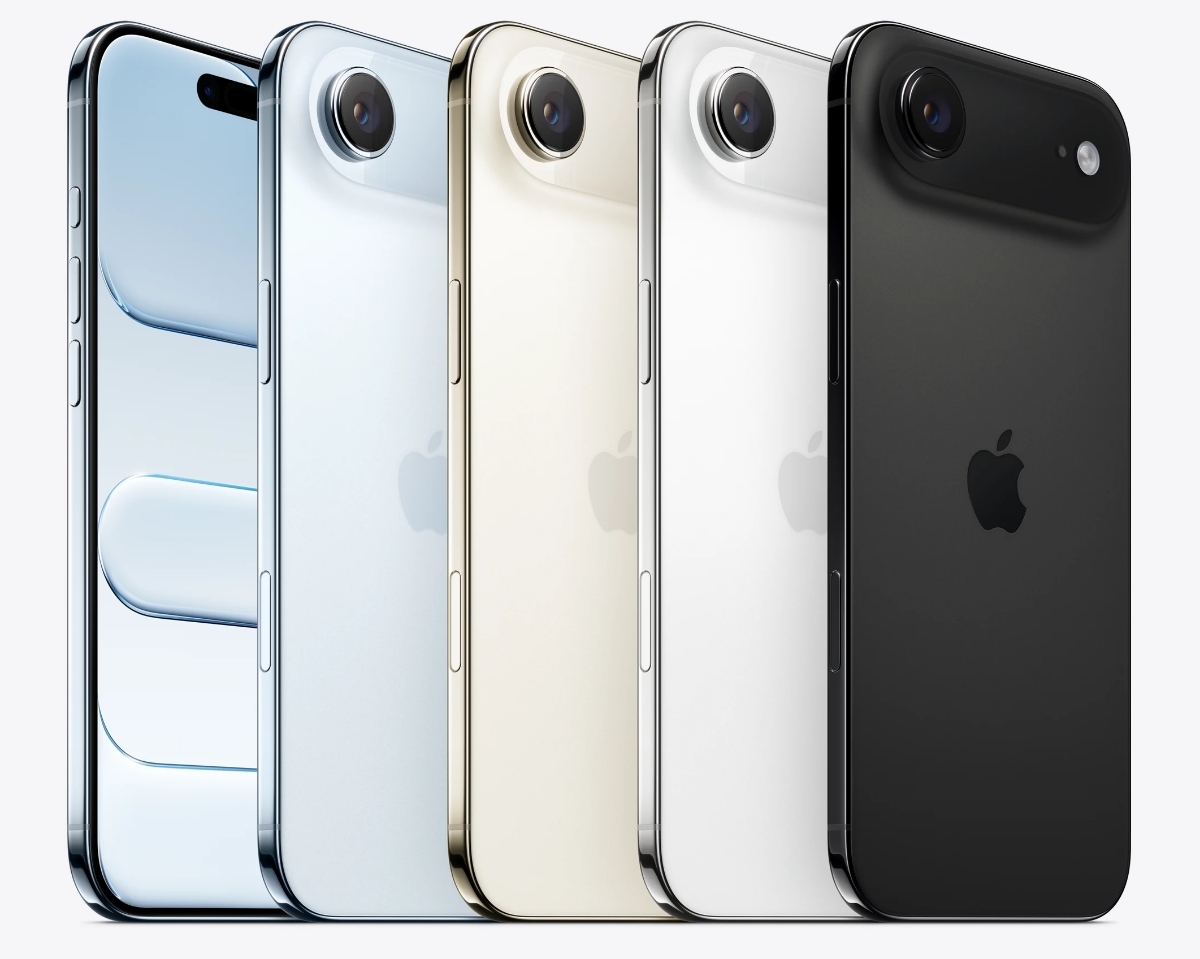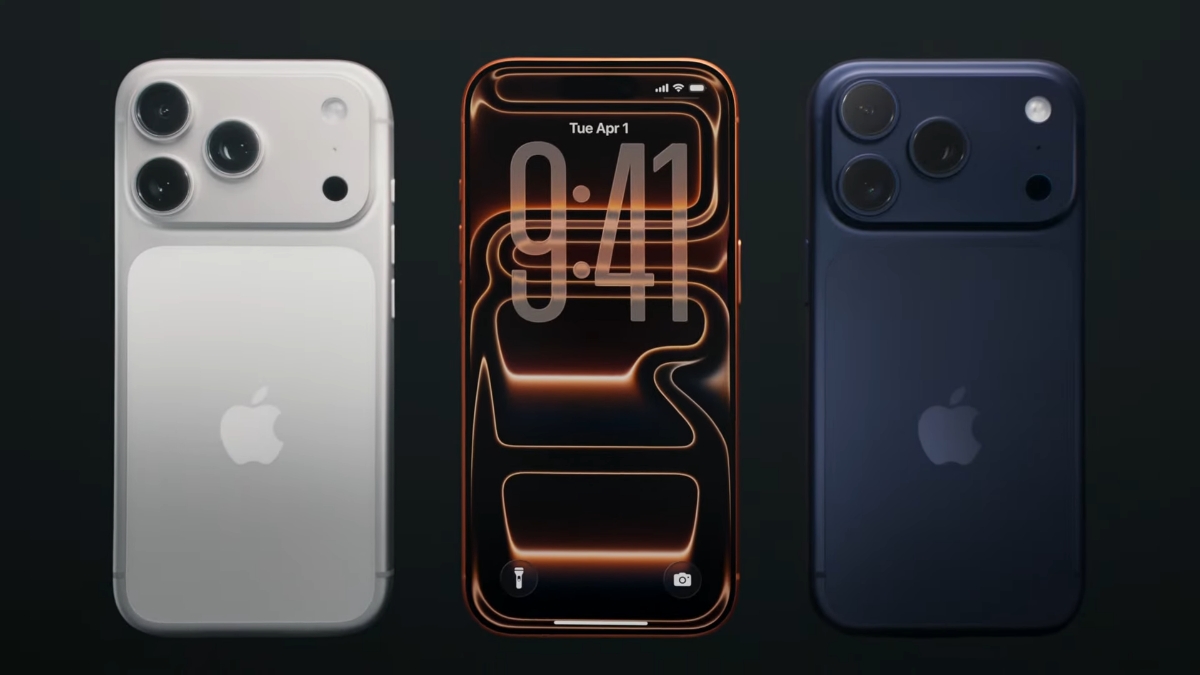Apple has announced the iPhone 17 series. Let's discuss their specs.
Yes, I know I'm a little late about this, but there are quite a few improvements, especially for the base model of the iPhone 17.
All 4 models in the series now have a ProMotion Display, yup, the base version of the iPhone 17 supports 120Hz refresh rate. That's an adaptive refresh rate, which goes from 1Hz up to 120Hz, based on your usage. The screen is a 6.3-inch Super Retina XDR panel, which supports Always-on display and has a peak outdoor brightness of 3000 nits. Apple says that the iPhone 17's Ceramic Shield 2 coating on the screen makes it 3 times more resistant to scratches.
The iPhone 17 is powered by an Apple Silicon A19 chipset, built on a 3nm process. It has 6 cores; 2 performance cores and 4 efficiency cores, while the 5-core GPU supports hardware-accelerated ray tracing, mesh shading and MetalFX Upscaling. The iPhone 17 has a 16-core Neural Engine, and supports Apple Intelligence. Reports indicate that the iPhone 17 has 8GB of RAM, while the other 3 models have 12GB of RAM. And Apple has upgraded the storage on the base model from 128GB to 256GB
Apple says the iPhone 17's battery offers up to 8+ hours more battery life than its predecessor, the iPhone 16. The product listing says the battery offers up to 30 hours video playback. The device supports up to 50% charge in 20 minutes, with a 40W adapter, but you'll have to buy one separately.
The iPhone 17 has a Dual Fusion camera, which has 2 cameras in one. The first of these is a 48MP Fusion Main Camera with an f/1.6 aperture, and a 12MP telephoto lens that supports 2x zoom. Then you have the 48MP Fusion Ultra Wide camera and a 12MP Macro sensor. The 18MP selfie camera on the iPhone 17 is nearly twice the size of the previous one, and it's square shaped. Here's the thing, this square shaped sensor allows you to take selfies in any orientation, i.e. portrait or landscape, without rotating the phone. Apple calls this the Center Stage Camera.

Next is the iPhone 17 Air, a brand-new model that is just 5.6mm thick. It packs a 6.5-inch display, and has Ceramic Shield 2 on both sides. Apple says the back is 4x more resistant to cracks. The iPhone 17 Air has a titanium frame, unlike the other models which have an aluminium frame. The bump at the top of the rear panel is called a "plateau", it houses a single camera, a 48MP Fusion Camera that also supports 12MP telephoto photography with 2x zoom. It has the same 18MP Center Stage Camera on the front. It is now possible to shoot videos using both the front and rear cameras in Dual Capture mode.
Apple has packed an A19 Pro chip in the iPhone 17 Air. It has 6 cores: 2 performance cores and 4 efficiency cores, and a 5-core GPU with 2nd-gen Dynamic Caching. This is the first iPhone to come with Apple's N1 Chip, and supports Wi-Fi 7, Bluetooth 6, and Thread. The iPhone 17 Air features a C1X modem, an upgraded version of the C1 which debuted in the iPhone 16 SE. Apple says the C1X is twice as fast as the C1, and is 30% more energy-efficient. The iPhone 17 Air is eSIM only, worldwide. You can't use physical SIM cards with it. Both the iPhone 17 Air and the iPhone 17 has a USB Type-C port, but its a USB2.

Coming to the iPhone 17 Pro, it is also equipped with an A19 Pro, ceramic glass on the back and front. However, it has an aluminium frame instead of titanium. Why? Well, Apple says it designed an aerospace-graded aluminium alloy, that has 20 times more thermal conductivity than titanium. The phone has a vapor chamber filled with deionized water, laser welded into the aluminium chassis. This acts as a cooling system to dissipate heat throughout the device, allowing for better performance. Apple says that with the A19 Pro and its superior thermal management system, users can get up to 40% better sustained performance. The iPhone 17 Pro has a dual-tone finish, and a large camera plateau, that houses various sensors including the cameras and antennas, featuring three camera sensors. The Pro Max version has 2TB of storage.
Apple has priced the iPhone 17 at $799, $1129 CAD, €949, £799, A$1399, INR 82900. The iPhone 17 Air $999, $1449 CAD, A$1799, €1,199, £999, INR 119900. The iPhone 17 Pro carries a price tag of $1099, $1599 CAD, A$1,999, £1099, €1299, INR 134000. And the iPhone 17 Pro Max costs $1199, $1749 CAD, A$2199, £1199, €1499 and INR 149900. The iPhone 17 series will be available for pre-order from September 12, and will start shipping on September 19th.
iOS 26 launches on September 15th, and brings new Apple Intelligence features like Visual Intelligence, which is basically Apple's version of Circle to Search. Other new AI features include Live Translation. I'll cover iOS 26 in a later article. But I want to mention a new feature in iOS 26. Apple has introduced a security feature called Memory Integrity Enforcement. This could help prevent mercenary spyware, aka targeted attacks, from compromising an iPhone's security.
The Enhanced Memory Tagging Extension (EMTE) is an always-on memory safety protection that protects key attack surfaces like the kernel and over 70 userland processes. It is supported by secure typed allocators and tag confidentiality protections. Apple says that its mitigation limits the effective reach of Spectre V1 leaks at virtually zero CPU cost. The Cupertino company believes this will make mercenary spyware more expensive and difficult to develop and maintain, and it could disrupt many exploitation techniques used by hackers.
Here are my thoughts about the new iPhone 17 series (as an iPhone 13 user).
If I had to choose one, I'd probably pick the base iPhone 17, it's the most affordable of the lot, and now has almost all the features a user may want, whether as a new buyer or someone looking to upgrade from an older model. My iPhone 13 feels compact, maybe even a bit tiny with its 6.1-inch screen compared to most modern phones. I prefer using a lighter phone, but the iPhone 17's 6.3-inch display may not be too big to feel uncomfortable, plus the weight difference is just 3g more. But the iPhone Air's 6.5-inch screen might could make reaching the top of the screen a little difficult, but the fact that the handset weighs 12g lighter than the base model is crazy. It also means the device has a smaller battery, and that is a compromise that I don't like. My iPhone 13 has 4GB RAM, 128GB of storage, and a 60Hz display, the iPhone 17 has 8GB RAM, 256GB of storage and a 120Hz display. That's literally double the specs, while still maintaining the price tag at $799 (at least in the U.S.).
The Pro models are good for those who want a larger battery, and aren't bothered by the price tag. The iPhone 17 Air is an odd choice, it's only a $100 cheaper, but has a slightly bigger display and a titanium frame. But the fact that it has a single camera on the back, and a single speaker, is a bit of a concern. If you can afford the iPhone Air, I think it's probably worth stretching your budget and go for the Pro. On the other hand, the dual-tone finish on the Pro makes it look less premium. Otherwise, go for the iPhone 17 base model, as it seems to offer the best value for money.
Thank you for being a Ghacks reader. The post Apple announces the iPhone 17, iPhone 17 Air, and iPhone 17 Pro appeared first on gHacks Technology News.


0 Commentaires